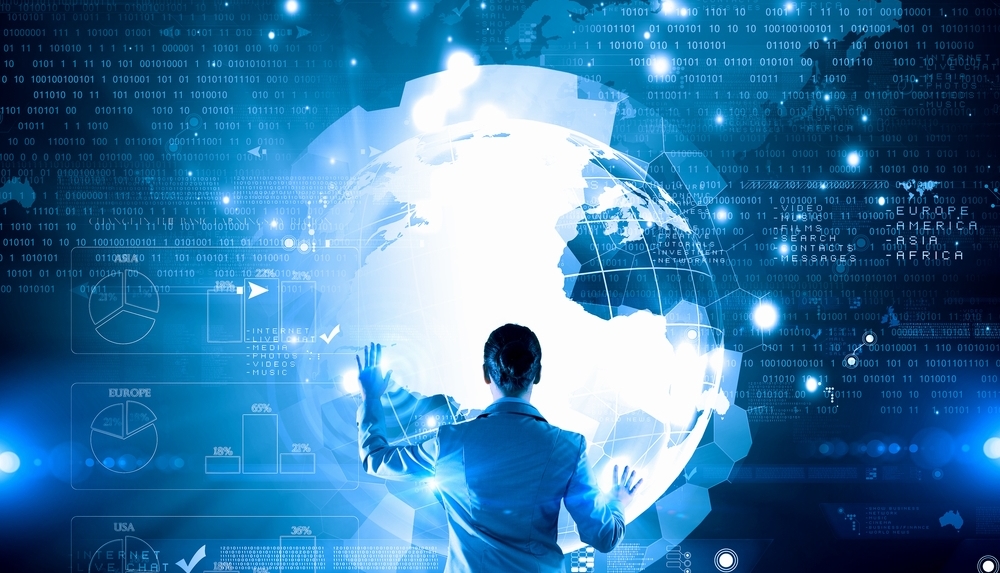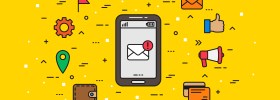We’re not going to talk about whether or not the Internet of Things (IoT) is a good thing or an awful one. As with most things, even the best intentions in the wrong hands can have terrible results. But that doesn’t mean we shouldn’t keep working toward the best intentions. And with the Internet of Things being a when more than an if, turning into a right now, it’s time we stop talking about should it happen and instead prepare ourselves for its steady advance.
You’d be insane to want to avoid the Internet of Things because it’s coming and it’s going to be HUGE. Seriously, capslocked, bolded, underlined HUGE. Gartner bets on there being 25 billion connected devices and $263 billion in revenue in just four years. And Cisco predicts the Internet of Things to be worth $19 trillion in the next decade. Yes, that was meant to be a “T” at about five times the entire U.S. budget.
But I would say even more striking than the potential for profit is the potential for impact. The same Cisco report contends that: The Internet of Things will have ten times the impact than the Internet itself.
The Internet is said by many to be the most important invention of all time. For those of us 30 or older, we can remember life before the Web. Whether you look at it as having been for better or for worse, you can’t deny the profound impact the Internet has had on the way we communicate, the way we work, the way we shop, the way we play and, even, the way we love. (Cheers, Sir Berners-Lee!) Even if IoT falls short and only has twice the impact, it’s sure to make the list of the most significant innovations in the history of humankind.
What is the Internet of Things?
Good question although not necessarily with an easy answer. In the prospect of impact, in the same Top Ten Inventions I mentioned above—ranging from the wheel to the printing press to the combustible engine to the lightbulb to the telephone—the Internet of Things will be involved with all of them in some way.
Perhaps the best way to describe it is just how it sounds: any thing that will now be connected to the Internet. But that doesn’t mean that it excludes the connectivity we already have. In this new IoT world, the smartphone will become the remote control for our lives and the desktop and laptop will act as massive virtual control centers (a la R.U.D.I. from The Jetsons.) The first generation IoT devices were the FitBit and Apple’s Watch, but there’s a not-so-distant future where your fridge will order milk refills for you and your car may drive itself based on advanced risk assessment at a nanosecond.
An IT security and testing expert Brian Knopf told me that IoT is when a light or a lock is no longer simply just a light or a lock. He continued to clarify that “The Internet of Things is the network of physical objects that contain embedded technology to communicate and sense or interact with their internal states or external environment.”
Then testing consultant Paul Gerrard simplified or—depending on your perspective—further complicated the definition by saying “The ‘Internet of Things,’ now the ‘Internet of Everything.’ My prediction is in a few years’ time they’ll just say the Internet.”
But perhaps my favorite Internet of Things definition I collected was from Electric Imp IoT platform co-founder Hugo Fiennes who said, “The Internet of Things is about connecting things to the Internet and it’s really about the strength you can build with those connections.”
To use a sales phrase, it’s about the benefits not the features—although admittedly, with IoT things being such a new idea, it’s all about features right now. Or really it’s what Ben Foxall web developer of White October said at the Future of Web Apps conference last week, “Writing good code is important but it’s not what your job is, it’s part of your craft—to help people do something is the objective.” Even when designing simple mobile apps this should be the focus: What is the benefit? How are we helping someone?
And there’s just so much of that in the Internet of Things.
The Internet of Things applications are endless
Right now, the Internet of Things falls into two main areas:
- Passive information gathering: Like the aforementioned fitness wearables, which in turn informs us and maybe gets us to react to that information.
- Basic commands: A lot of us have the Apple TV or Google’s NEST, both of which act as a sort of hub, where we can give simple commands from our smartphones or tablets, like regulating temperature.
Both of these might make our lives a bit more convenient, but they don’t even scratch the surface. IoT is still a toy.
The next step is going to be wearables that help us with childcare or that to care for the elderly. It’s when home appliances will be online by default, catching breaks before they occur and helping manufacturers truly be able to predict the demand they need to supply. Big data will need a new name because it will utterly understate the amount of information that will be collected, which then will be turned into the next level of machine learning, where behaviour is predicted before acted upon.
The next generation IoT won’t just involve what we look at and the screens we touch, it’ll encompass all five senses, where we won’t be able to realize where the line is drawn between the digital and physical worlds, and where our patterns have been mimicked long enough that everything we do will be influenced by our preferences and are preferences will inevitably be influenced in everything we do.
Healthcare, security, transportation, home life, business life, the government, our pets even. The Internet of Things will change every sector you can imagine.
Perhaps most importantly, the Internet will fulfill its purpose of creating a World Without Borders, as drones and balloons and so much more will bring the rest of the world online making the most significant move toward equality humanity has ever seen.
Ignore all I’ve said before. The Internet of Things won’t impact our lives at all—it will be our lives. The Internet of Things is really the Internet of Us. And that’s why you’d be crazy to ignore it. And, of course, that’s why here at Blog Think Big, we aren’t. Check back soon as we dive into the different areas IoT is already affecting, the future of the Internet of Things, and, most importantly, what you can do to be prepared for it all.
Don’t forget to keep us updated too! Send us notes to @tefdigital!









